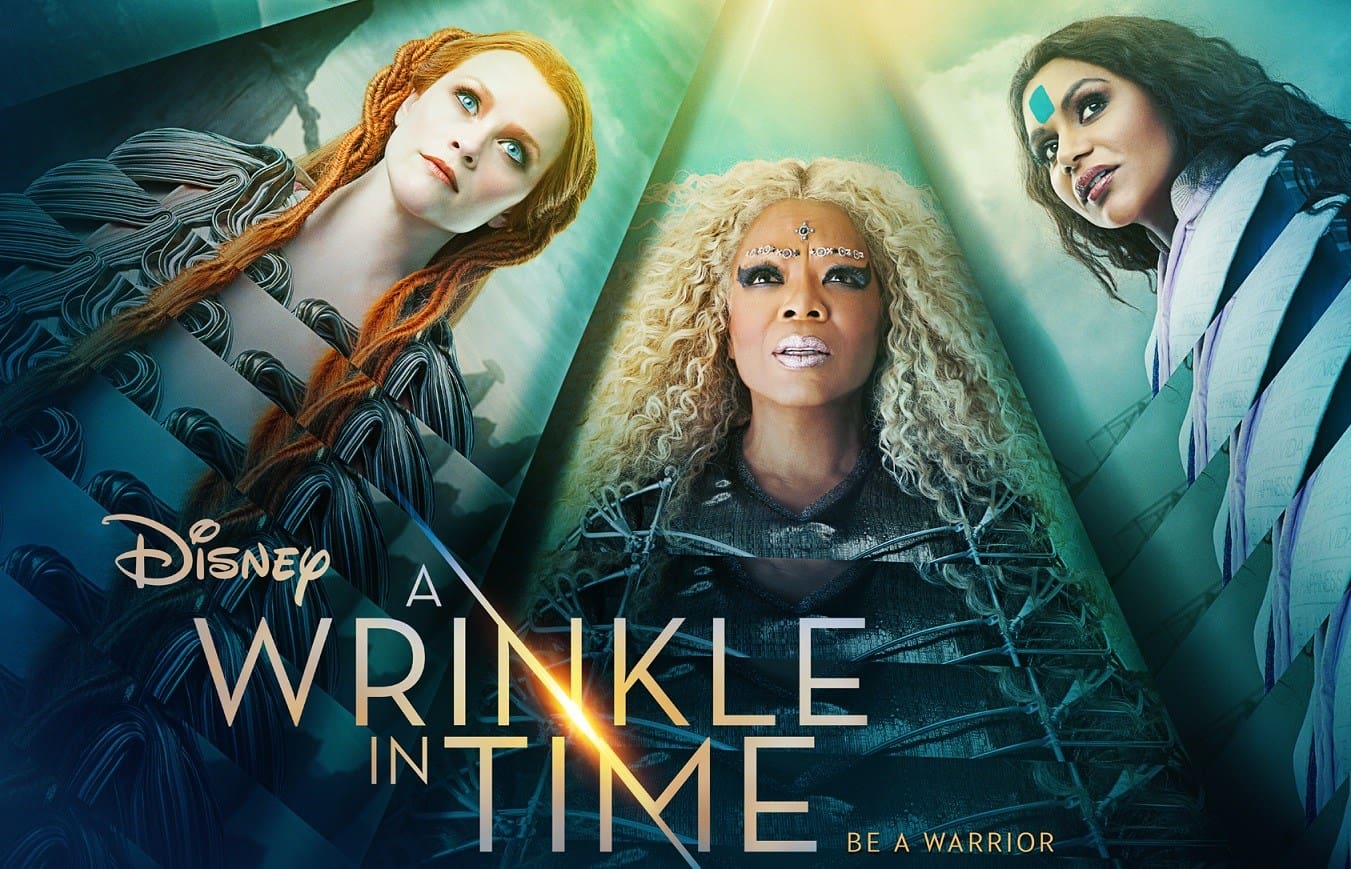I read A Wrinkle in Time in the 5th grade, but I don’t remember anything about it. At least, I didn’t think I did. Early in director Ava Duvernay’s adaptation of Madeleine L’Engle’s YA fantasy novel, there’s a shot of our protagonist, Meg (Storm Reid) waking up in her attic bedroom. The image tapped into something forgotten and possibly fundamental in my memory. Suddenly, I was sitting back in my classroom, staring at the book’s weird indigo cover, surrounded by old friends—some of whom are gone now. That was the first time I teared up during the film, but not the last. Obviously, not everyone will react as strongly as I did, but there is undeniable magic in what Duvernay has pulled off.
The film follows Meg, a young girl whose astrophysicist father (Chris Pine) disappeared four years prior. Though most people in Meg’s life think he ran out on his family, there’s a small possibility he got lost exploring the universe after he and Meg’s mother (Gugu Mbatha-Raw) discovered a way to travel through space and time instantaneously. That insane theory suddenly seems possible when Meg’s strange, adopted little brother, Charles Wallace (Deric McCabe), introduces her and her classmate Calvin (Levi Miller) to three women who claim to be the embodiments of the universe’s light.
As Meg’s mystical guides, Oprah Winfrey, Reese Witherspoon and Mindy Kaling are delightful. Witherspoon is funny, flighty and frank as Mrs. Whatsit, like Elle Woods somehow became a shapeshifting space sprite. As Mrs. Who, Kaling brings a lovely sense of sincerity and heart that’s difficult to achieve considering she speaks almost exclusively in famous quotes. Yet it’s Winfrey as Mrs. Which who brings the gravitas. Her moments with Reid in particular are filled with so much love and caring. Still, strong as each performer is, it’s their chemistry that makes the trio work so well throughout. However, not every character works at their level.
As Calvin, Miller is exactly the kind of boy whose beautiful, somewhat feminine looks would make a pre-teen girl’s heart flutter. Perhaps because he’s supposed to be mostly a dreamboat, Calvin is a little underwritten. Building Meg’s self-confidence is one of the plot’s major goals and it’s somewhat frustrating that Calvin basically exists solely as a cog in that wheel. Hearing him somewhat condescendingly tell Meg that she doesn’t even realize how great she is perhaps his and the film’s lowest point. Unfortunately, it’s also not the only sour moment throughout.
Duvernay has always been a director of singular style, but not every choice works here. As in Selma, she relies heavily on extreme close-ups and while cinematographer Tobias A. Schliessler lights everyone beautifully, the shot choice can become monotonous. The imaginary landscapes we visit are so spectacular that you start to miss them. While not everyone will find that stylistic choice distracting, there are other issues.
For example, simple mistakes in continuity between shots in the scene where the three Mrs. and the children visit Zach Galifianakis as the Happy Medium. It’s a small mistake, but one that’s unforgivable in such a big budget production. There’s also the issue of the soundtrack. While much of the film has a traditional score, modern pop songs frequently play and they can be disorienting.
However, aside from those minor issues Duvernay has created a world full of wonder that must be awe-inspiring for a young child. Whether it’s the CGI, the three Mrs.’ colorful and crazy costumes or the slightly off-kilter interpretations of our world, every frame is filled with magic. Sure, there are moments that feel a little unnecessary, like the scene where Mrs. Whatsit morphs into a giant, flying leaf creature and takes the children absolutely nowhere. But it’s hard to argue with such a spectacle when it’s just so fun and gorgeous.
More importantly, what the film says is too vital to let a few minor quibbles ruin the whole experience. Children’s emotions are not always taken seriously, but it’s important to remember that even while young people often adapt quickly, that doesn’t mean their potential, curiosity or especially trauma should be taken lightly.
Yes, some of the character beats here are a little heavy-handed (like Calvin’s emotionally abusive father), but kids will have a better understanding of grief and self-worth because of the way Reid charts Meg’s evolution. She plays Meg’s anger and skepticism just as powerfully as her vulnerability and intelligence. The film’s final half hour, which is hard to talk about without spoiling, is some of the best work from a young actor this decade. It is a star-making performance and one that will inspire a whole generation of young people.
A Wrinkle in Time is about traveling through time and space, but it is also itself an act of time travel. Not everything here will work for adults, but this movie isn’t really for adults—or at least not those unwilling to indulge their inner child. Ava Duvernay has made a film that goes back to the wonder and invention of early cinema. It is meant to be seen through a child’s eyes and not to spoil anything, but what they’ll see is an entire plot that hinges on a scene of a little biracial girl declaring to the embodiment of pure evil that she deserves to be loved, faults and all. Every child in the world should see that.
Rating: 8.5/10


